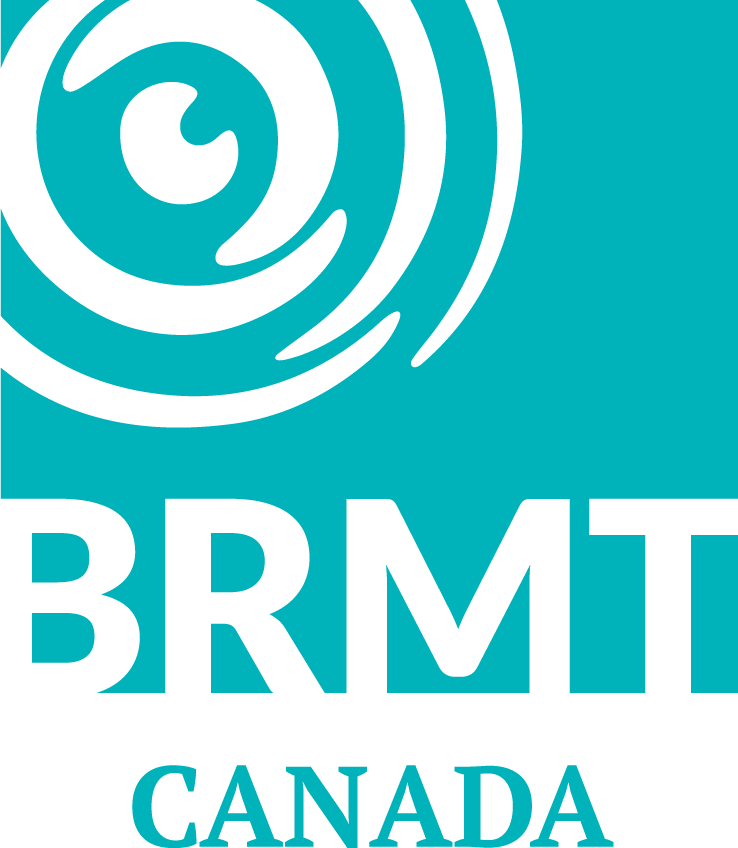Hand & Feet Reflexes
Hand Reflexes develop the motor control of the hands. The Feet Reflexes influence the ability to move the feet, legs, hips, and lumbar spine.
Hand Reflexes
Babkin Reflex
Lightly pressing the palms of a baby triggers the Babkin Reflex. The baby opens their mouth and bends the head forward or to the side. The Babkin reflex is developed in the second month after conception and is active during the first 3 or 4 months post-delivery.
Importance of the Babkin Reflex
Due to difficulties with articulation, the corresponding area of the sensory cortex in the left parietal lobe will not be properly stimulated. This may cause impaired phonological ability and difficulties perceiving sounds. Through motor training and integration of the Babkin reflex, articulation and phonological ability will improve.

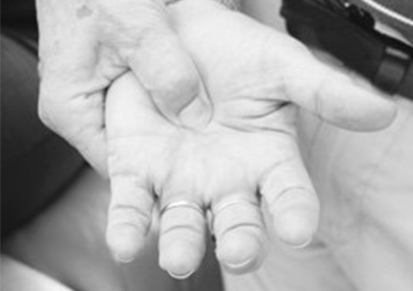
Some signs of an active Babkin Reflex:
Impaired motor control of hands
Jaw tension or teeth grinding
Affected fine motor skills and muscle tone
Challenges tying shoelaces, doing up buttons, etc.
Poor handwriting
Challenges with speech and articulation
Involuntary movements of the mouth and tongue when the child writes, plays an instrument, or uses scissors
Hands Pulling Reflex
The Hands Pulling reflex is normally active immediately after delivery. The reflex is triggered by holding the baby around the wrists and pulling towards you. Typically, the baby bends the arms to move itself into sitting position. An active Hands Pulling reflex causes tensions in the forearms, making writing difficult.
At the age of two months the Grasp reflex is merged with the Hands Pulling reflex and they start to function as one unit. When you put your fingers into the palms of the baby, they will clutch your fingers and bend the arms so you can help him to get up into sitting position. These two reflexes are important for the baby’s ability to grasp objects and put them into their mouth. They also assist with the integration of the Babkin reflex.
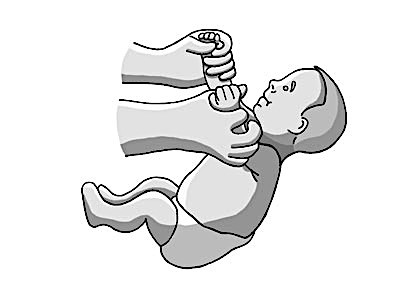
Grasp Reflex
The Grasp Reflex is developed the third month after conception and should be integrated during the first year post-delivery. Putting a finger in the hand of the baby triggers the Grasp Reflex. The baby will grasp the finger and hold it.

If the Grasp Reflex is not integrated the child may have challenges with:
Fine motor control of hands
Handwriting and fine motor skills
Pencil gripping
Tension in the shoulders (makes writing difficult and laborious)
Weak hands
Games to help support integration of the Hand Reflexes:
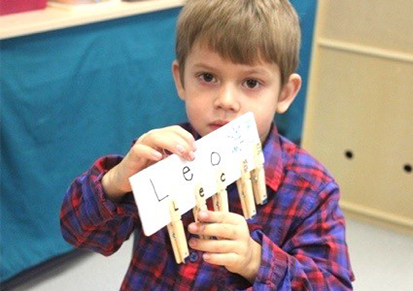
Clothespin Fun
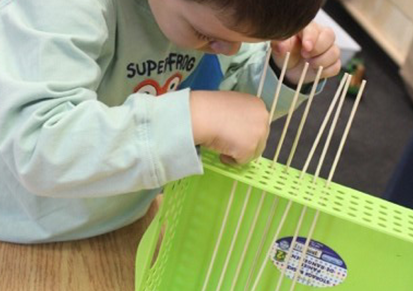
Fine Motor Fun
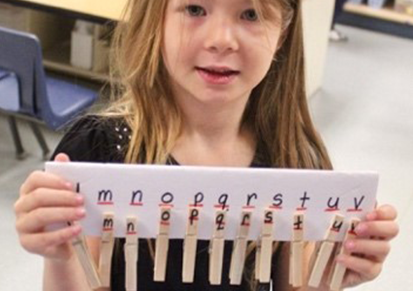
Clothespin Fun
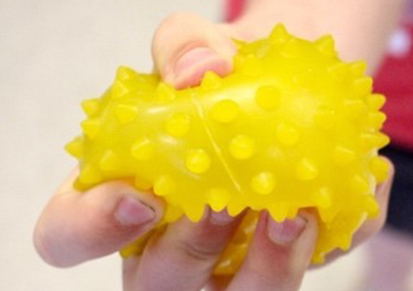
Ball Squeeze

Clothespin Fun
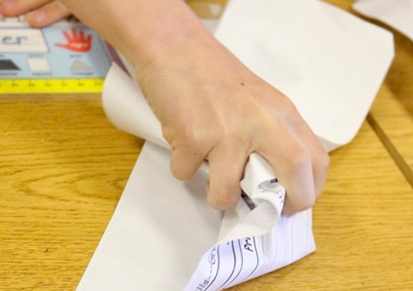
Finger Flick
Primitive Reflexes
Postural Reflexes
- The Amphibian Reflex
- Crawling Reflex
- Neck and Head Righting Reflexes
Bridge or Transitional Reflexes
Feet Reflexes
Babinski Reflex
The Babinski reflex develops during the first month after delivery and should be integrated at the age of two years. When you stroke along the outer lateral part of the sole of the foot from the heel to the little toe, the big toe is extended and the other toes spread.
The Babinski reflex is important in preparing the feet for walking and influences the ability, not only to move the feet, but also the legs, hips and lumbar spine. It is important for lower-body muscle tone.
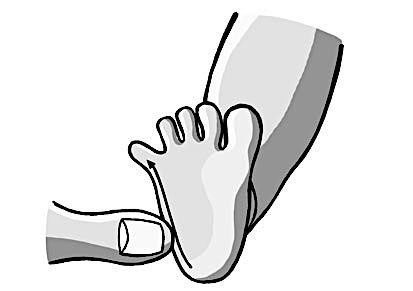
Signs of an undeveloped or unintegrated Babinski Reflex:
Flat-footed
Slow to walk and run
Walking on the inside of the foot (wearing down shoes unevely)
Loose ankles that are easily sprained
Pigeon toed or inwardly rotated hips
Knock kneed or bowlegged
If the reflex is developed, but not integrated:
Tendency to walk on the outside of the foot
Shoes worn down on the outside and hips outwardly rotated
Adults may experience the reflex becoming triggered when walking, leading to various postural issues
Osteoarthritis of the hip joint (due to a retained Babinski and ATNR)

Wearing down of the inside of the shoe

Wearing down of the outside of the shoe
Plantar Reflex
If you press your thumb against the sole of the baby’s foot between the toes and the arch of the foot, the toes will bend. The reflex emerges when the fetus is 11 weeks and should be integrated 7 to 9 months after birth. The Plantar Reflex assists in breastfeeding.

Signs of a non-integrated Plantar Reflex:
A non-integrated Plantar Reflex can cause tension in the jaw, issues with biting and grinding of the teeth, similar to a non-integrated Babkin Reflex, and therefore affects articulation.
A retained Plantar reflex may cause phonological challenges and difficulty perceiving sounds in the same way as the Babkin hand reflex does. Through motor training and integration of the Babkin reflex, articulation will improve, as will phonological ability.
Usually the Babkin and Plantar reflexes are retained simultaneously in children. If both are retained, both need to be integrated in order to improve articulation and phonological ability.
Games to help support integration of the Feet Reflexes:

Toe Pick Up

Toe Pick Up

Balance Walking
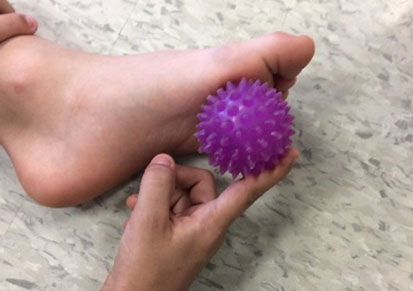
Tactile Stimulation
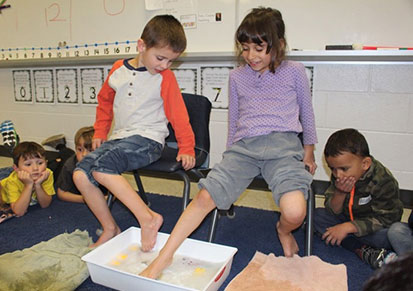
Bubble Toe Pick Up
To learn more, attend a Blomberg Rhythmic Movement course or workshop!
We are always adding new course dates and locations.
